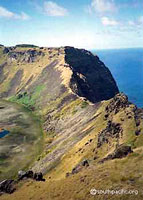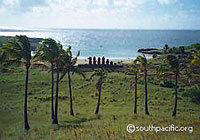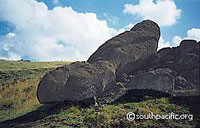Here’s a little Beetle quiz based on capital cities. See how many you get right! Go on, have a guess!
What is the capital city of the following countries:
- Angola
- Egypt
- Morocco
- Uganda
- Palau
For the answers, see at the end of the e-newsletter.

Here’s a little Beetle quiz based on capital cities. See how many you get right! Go on, have a guess!
What is the capital city of the following countries:
For the answers, see at the end of the e-newsletter.
If you have a travellers tale that your aching to tell. Then why not visit the “Travel Sized Bites” section of the Website and share it with the world. Travel Sized Bites
The winner of last month's Trailblazer Guidebook on Tibet is: Gavin Fernandez congratulations, Gavin!
This month, win a Rough Guide guidebook on Peru. See http://www.roughguides.com for travel info.
Some people have said the quiz is difficult, we say do some research: try google.com or Ask Jeeves, if you need help with the answers.
Answers to: So You Think You’re Well Travelled?
0 out of 5 – you need to get out more!
1-3 – not bad
4 – very good! You are a Globetrotter!
5 – are you sure you didn’t sneak a look?
The March meeting has been cancelled as Laurie, the New York Chair will be away on business in LA. If anyone would like to help Laurie or stand in as Deputy, please e-mail her on: newyork@globetrotters.co.uk
For details of forthcoming meetings email newyork@globetrotters.co.uk or register for email updates, click here at our website.
New York meetings are held at The Wings Theatre, 154 Christopher Street (btw Greenwich St and Washington St), to the right of Crunch Fitness, in the Archive on the first Saturday of each month at 4 pm .
Discus this article and give feedback in our online forum
For information on Ontario meetings, please contact Svatka Hermanek: shermanek@schulich.yorku.ca or Bruce Weber: tel. 416-203-0911 or Paul Webb: tel. 416-694-8259.
Meetings are held on the third Friday of January, March, May, September and November. Usually at the Woodsworth Co-op, Penthouse, 133, Wilton Street in downtown Toronto at 8.00 p.m.
Discus this article and give feedback in our online forum
If you enjoy writing, enjoy travelling, why not write for the free monthly Globetrotters e-newsletter! The Beetle would love to hear from you: your travel stories, anecdotes, jokes, questions, hints and tips, or your hometown or somewhere of special interest to you. Over 8,000 people currently subscribe to the Globetrotters e-news.
To see your story in cyber print, e-mail the Beetle with your travel experiences, hints and tips or questions up to 750 words, together with a couple of sentences about yourself and a contact e-mail address to Beetle@globetrotters.co.uk
Discus this article and give feedback in our online forum
Ask me which Pacific island has the most to offer hikers and I’ll probably answer Easter Island. Here on an island 11 km wide and 23 km long you’ll find nearly a thousand ancient Polynesian statues strewn along a powerfully beautiful coastline or littering the slopes of an extinct volcano. Getting there is easy as Easter Island can be included in Oneworld’s round-the-world Explorer airpass, and a fine selection of inexpensive places to stay and eat awaits you.
The legends of Easter Island have been recounted many times. What’s less known is that the island’s assorted wonders are easily accessible on foot from the comfort of the only settlement, Hanga Roa. Before setting out see the sights, however, visit the excellent archaeological museum next to Ahu Tahai on the north side of town (the term “ahu” refers to an ancient stone platform). Aside from the exhibits, the museum has maps which can help you plan your trip.
 The first morning after arrival, I suggest
you climb Easter Island’s most spectacular volcano, Rano
Kau, where Orongo, a major archaeological site, sits on the
crater’s rim. But rather than marching straight up the main
road to the crater, look for the unmarked shortcut trail
off a driveway to the right just past the forestry station
south of town. It takes under two hours to cover the six km
from Hanga Roa to Orongo, but bring along a picnic lunch
and make a day of it. (If climbing a 316-meter hill sounds
daunting, you can take a taxi to the summit for around US$6
and easily walk back later in the day.) Once on top, you’ll
find hiking down into the colourful crater presents no
difficulty. It may also look easy to go right around the
crater rim, but only do so if you’re a very experienced
hiker and have a companion along as shear 250-meter cliffs
drop into the sea from the ridge.
The first morning after arrival, I suggest
you climb Easter Island’s most spectacular volcano, Rano
Kau, where Orongo, a major archaeological site, sits on the
crater’s rim. But rather than marching straight up the main
road to the crater, look for the unmarked shortcut trail
off a driveway to the right just past the forestry station
south of town. It takes under two hours to cover the six km
from Hanga Roa to Orongo, but bring along a picnic lunch
and make a day of it. (If climbing a 316-meter hill sounds
daunting, you can take a taxi to the summit for around US$6
and easily walk back later in the day.) Once on top, you’ll
find hiking down into the colourful crater presents no
difficulty. It may also look easy to go right around the
crater rim, but only do so if you’re a very experienced
hiker and have a companion along as shear 250-meter cliffs
drop into the sea from the ridge.
Another day, rise early and take a taxi to lovely
Anakena Beach at the end of the paved road on the north
side of the island (you should pay under US$10 for the 20
km). A few of the famous Easter Island statues have been
restored at Anakena and you could go for a swim, although
the main reason you’ve come is the chance to trek back to
Hanga Roa around the road-free northwest corner of the
island. You’ll pass numerous abandoned statues lying
facedown where they fell, and the only living creatures
you’re unlikely to encounter are the small brown hawks
which will watch you intently from perches on nearby rocks.
If you keep moving, you’ll arrive back in town in five or
six hours (but take adequate food, water, and sunscreen).
This is probably the finest coastal walk in the South
Pacific.
Almost as good is the hike along the south coast, although you’re bound to run into other tourists here as a paved highway follows the shore. Begin early and catch a taxi to Rano Raraku, the stone quarry where all of the island’s statues were born. This is easily the island’s most spectacular sight with 397 statues in various stages of completion lying scattered around the crater. And each day large tour groups come to Rano Raraku to sightsee and have lunch. However, if you arrive before 9 am, you’ll have the site to yourself for a few hours. When you see the first tour buses headed your way, hike down to Ahu Tongariki on the coast, where 15 massive statues were re-erected in 1994. From here, just start walking back toward Hanga Roa (20 km) along the south coast. You’ll pass many fallen statues and enjoy some superb scenery. Whenever you get tired, simply go up onto the highway and stick out your thumb and you’ll be back in town in a jiffy.
An outstanding 13-km walk begins at the museum and follows the west coast five km north to Ahu Tepeu. As elsewhere, keep your eyes pealed for banana trees growing out of the barren rocks as these often indicate caves you can explore. Inland from Ahu Tepeu is one of the island’s most photographed sites, Ahu Akivi, with seven statues restored in 1960. From here an interior farm road runs straight back to town (study the maps at the museum carefully, as you’ll go far out of your way if you choose the wrong road here).
A shorter hike takes you up Puna Pau, a smaller crater which provided stone for the red topknots that originally crowned the island’s statues. There’s a great view of Hanga Roa from the three crosses on an adjacent hill and you can easily do it all in half a day. A different walk takes you right around the 3,353- meter airport runway, which crosses the island just south of town. Near the east end of the runway is Ahu Vinapu with perfectly fitted monolithic stonework bearing an uncanny resemblance to similar constructions in Peru.
 Easter Island’s moderate climate and scant
vegetation make for easy cross country hiking, and you
won’t find yourself blocked by fences and private property
signs very often. You could also tour the island by
mountain bike, available from several locations at US$10 a
day. If you surf or scuba dive, there are many
opportunities here. A minimum of five days are needed to
see the main sights of Easter Island, and two weeks would
be far better. The variety of things to see and do will
surprise you, and you’ll be blessed with some unforgettable
memories.
Easter Island’s moderate climate and scant
vegetation make for easy cross country hiking, and you
won’t find yourself blocked by fences and private property
signs very often. You could also tour the island by
mountain bike, available from several locations at US$10 a
day. If you surf or scuba dive, there are many
opportunities here. A minimum of five days are needed to
see the main sights of Easter Island, and two weeks would
be far better. The variety of things to see and do will
surprise you, and you’ll be blessed with some unforgettable
memories.
David Stanley is the author of Moon Handbooks Tahiti: Including the Cook Islands http://www.southpacific.org/tahiti.html which also contains a full chapter on Easter Island. His online guide to Easter Island may be perused at http://www.southpacific.org/text/finding_easter.html
Discus this article and give feedback in our online forum
The town of Knysna in the western Cape of South Africa lies a scenic 500km east of Cape Town along the Garden Route. There is the option to drive all the way into town, but a far more interesting way is to take the Outeniqua choo-Tjoe train that departs from George. If you are lucky your train will be pulled by a steam engine. Once you have left George’s shanty towns behind the scenery is wonderful, sweeping curves where if you peer out of the window you can see the engine going round the bend ahead. At Sedgefield the line passes over a scenic bridge, under which flows an inlet from the Indian Ocean on your right. The train takes a couple of hours and costs approximately 120 rand.
Knysna itself has much to offer including trips into the surrounding countryside where you can hike, abseil and go mountain biking amongst others. At the waterfront area there are lots of touristy shops and restaurants to while away some time. From a jetty at the waterfront it is well worth taking a trip out to the Knysna Heads. Knysna itself is in a lagoon protected from the ocean by a narrow inlet where the surrounding hills almost meet. The trip out is on one of the worlds most advanced ferries, even though it does have the appearance of a bathtub!
The boat actually has three legs that can be put down on the sea floor so that it is lifted up like an oil platform. This can be used in rescues and also to drop passengers off at places where there is no jetty. The “Heads” are a raging torrent even on a semi calm day, they have claimed hundreds of ships and thousands of lives over the centuries, so much so that if you intend to take a vessel through them you have to inform the shipping insurers Lloyds of London. The boat staff keep up an interesting flow of information as you cruise, not only about their very interesting boat, but also about the nearby nature reserve and about what you are seeing.
After all this activity it is hard to beat a meal at “Bosuns” a pub come restaurant, which does excellent bar and sit down food for around 80 Rand, including a drink.
East of Knysna is the Tsitsikama National Park, which is located right next to the ocean. From the beach you can follow a lovely boardwalk through the forest called the “Mouth Trail”, which eventually comes out at the spectacular Hangbrug suspension bridge, from where you can gaze onto the crashing Indian Ocean waves. On the way back to town you can take in the adrenaline junkies Mecca of the Bloukrans bungy jump, this is currently the world’s highest bungy with a drop of 216 metres, reputed to be the longest seven seconds of your life as you free fall, are there any Globies out there who can confirm this, as this one has no intention of finding out!
Discus this article and give feedback in our online forum
World airpports top 10
| Rank | Country Name | Airports |
|---|---|---|
| 1 | United States | 14,720 |
| 2 | Brazil | 3,264 |
| 3 | Russia | 2,743 |
| 4 | Mexico | 1,848 |
| 5 | Canada | 1,417 |
| 6 | Argentina | 1,359 |
| 7 | Bolivia | 1,093 |
| 8 | Colombia | 1,091 |
| 9 | Paraguay | 915 |
| 10 | South Africa | 741 |
Source:
Discus this article and give feedback in our online forum